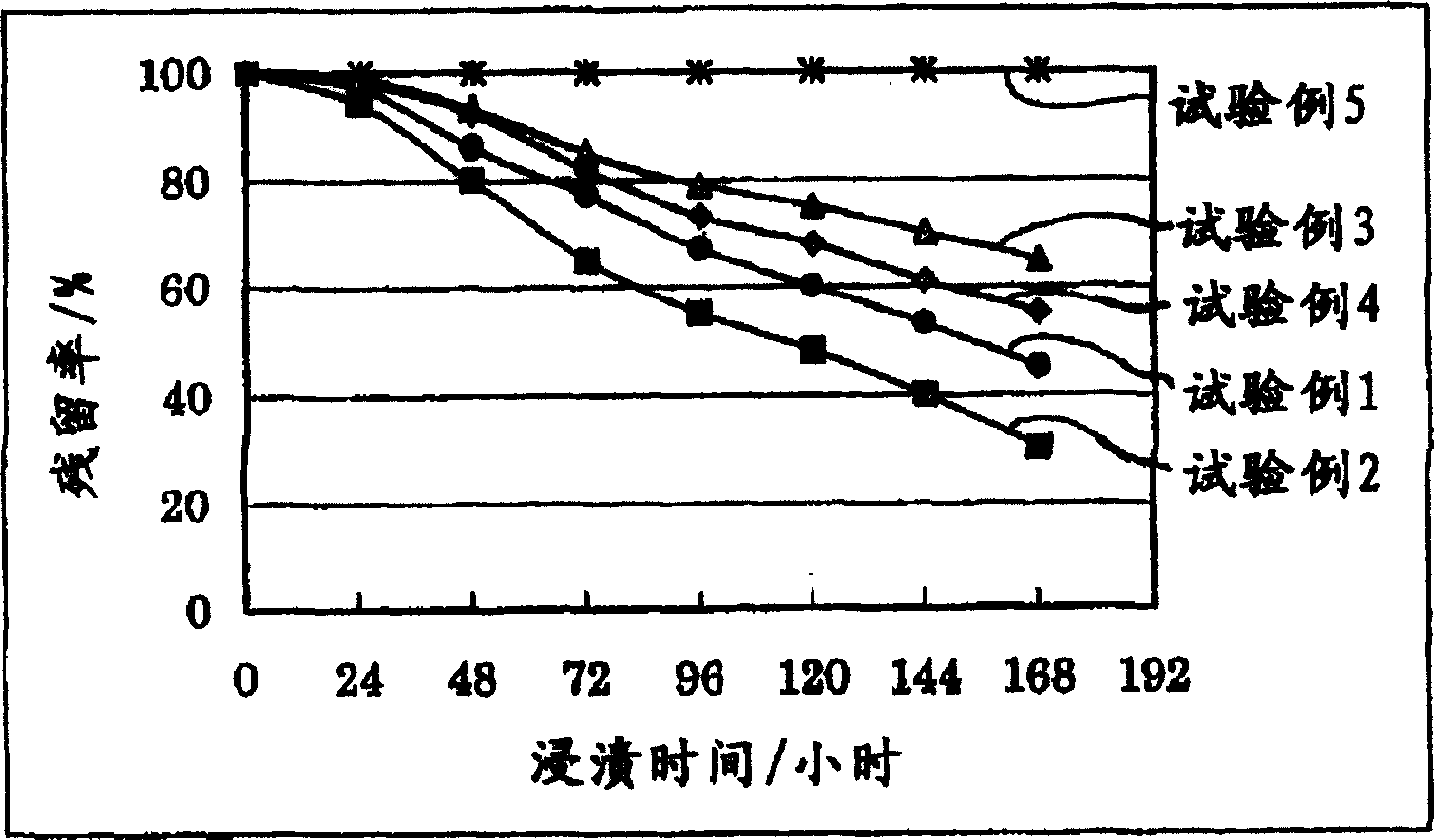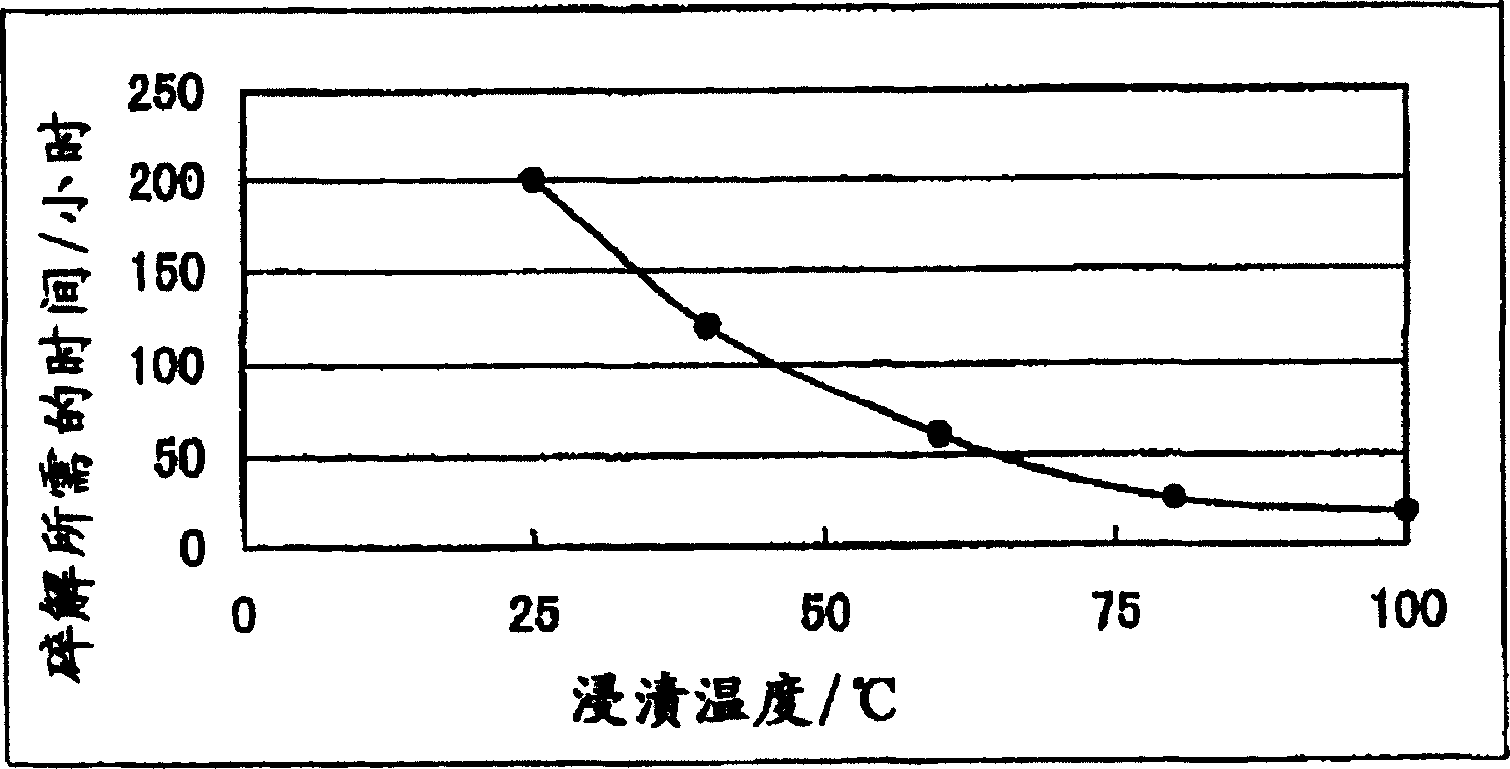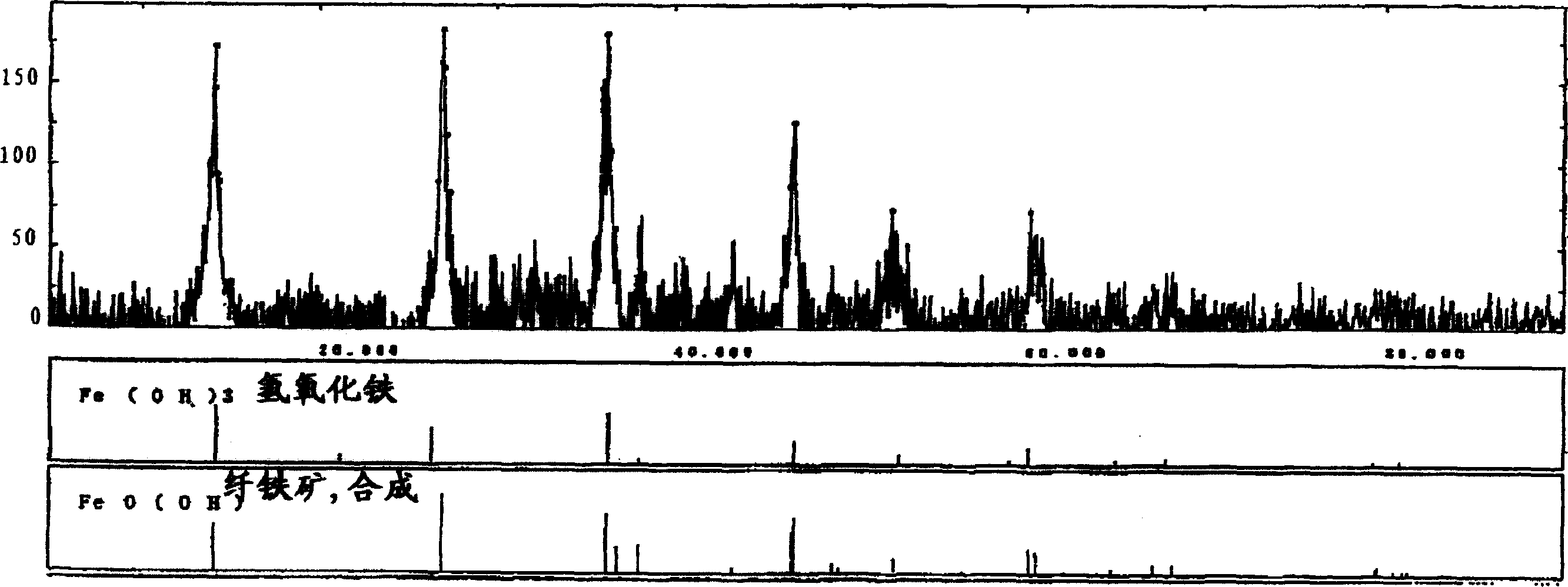Method for recovering useful element from rare earth - transition metal alloy scrap
A recovery method and transition metal technology, applied in the direction of rare earth metal compounds, rare earth metal oxides/hydroxides, chemical instruments and methods, etc., can solve the problems that cannot be dealt with intact, the cost is difficult to process in large quantities, and the effect is not sufficient And other issues
- Summary
- Abstract
- Description
- Claims
- Application Information
AI Technical Summary
Problems solved by technology
Method used
Image
Examples
Embodiment 1
[0055] The composition shown in Table 1 was mixed with 6 pieces of sludge containing powdery grinding debris (dry weight 119.7 g) was immersed in 500 ml of ammonium sulfate aqueous solution with a concentration of 0.8 mol / l. Next, oxidation treatment was performed at 70° C. for 30 hours while stirring and aerating, and precipitates of oxide powder were produced from the sludge. The oxide powder was isolated by filtration and dried to 192.5 g. A part thereof was collected and the composition was analyzed. Table 1 shows the results.
[0056] It is clear from Table 1 that at least 98% of the rare earth elements and at least 93% of Co in the sludge migrated to the obtained powder.
[0057] R in Table 1 and Table 2 represents a mixture of Nd, Pr, and Dy, and "Others" in Table 1 represents gas components such as oxygen, hydrogen, carbon, and sulfur.
[0058] Sludge sample (119.7g)
[0059]Next, an attempt was made to recover rare earth elements from the above powder ...
Embodiment 2
[0063] 350 g (dry weight 175 g) of sludge containing grinding debris derived from the production process of the rare earth-iron-boron sintered magnet having the same composition as in Example 1 was immersed in 500 ml of an aqueous solution of ammonium sulfate having a concentration of 0.2 mol / l. . Next, oxidation treatment was performed at 70° C. for 12 hours while stirring and aerating, and the generated oxide powder was filtered and separated. Next, the entire amount of the obtained oxide powder was dispersed in 200 ml of water, and a 5N aqueous solution of nitric acid was added dropwise while stirring and aerating. The temperature is maintained at 40-50°C. The pH gradually decreased from around 7 while the reaction proceeded, and the dropwise addition was terminated when the pH reached 3. The total dripping amount was 140 ml, and the time required was 8 hours. Next, the precipitate was filtered, and the obtained precipitate was washed with water. The filtrate and the wa...
PUM
 Login to view more
Login to view more Abstract
Description
Claims
Application Information
 Login to view more
Login to view more - R&D Engineer
- R&D Manager
- IP Professional
- Industry Leading Data Capabilities
- Powerful AI technology
- Patent DNA Extraction
Browse by: Latest US Patents, China's latest patents, Technical Efficacy Thesaurus, Application Domain, Technology Topic.
© 2024 PatSnap. All rights reserved.Legal|Privacy policy|Modern Slavery Act Transparency Statement|Sitemap



